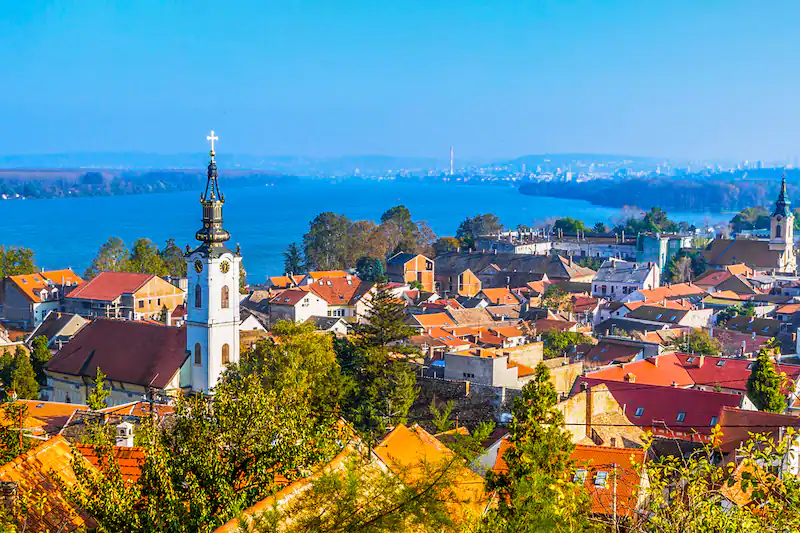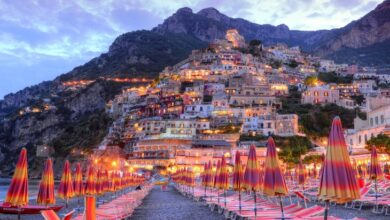
Serbia, a landlocked country situated at the crossroads of Central and Southeast Europe in the southern Pannonian Plain and the central Balkans, is a destination that boasts a rich tapestry of culture, history, and natural beauty. Its tumultuous past, marked by various empires and conflicts, has given rise to a resilient and vibrant nation. Here are some fascinating aspects of Serbia that make it a unique and intriguing country.
1. Historical Melting Pot
Serbia’s history is a complex layering of cultures and influences. From the ancient Roman Empire, which left behind spectacular fortresses and cities like Gamzigrad-Romuliana (a UNESCO World Heritage site), to the Byzantine and Ottoman empires that introduced Eastern Orthodox Christianity and Islamic architecture, Serbia’s past is a mosaic of civilizations. The country’s medieval period is particularly notable, with monasteries like Studenica and Sopoćani showcasing remarkable Byzantine-style frescoes.
2. Belgrade: The White Phoenix City
The capital city, Belgrade, known as the “White Phoenix” for its ability to rise repeatedly from the ashes of its tumultuous history, is one of Europe’s oldest cities, with a history dating back over 7,000 years. Its strategic location at the confluence of the Danube and Sava rivers has made it a target for numerous conquering armies. Today, Belgrade is a lively, modern city with a vibrant nightlife, thriving café culture, and historical sites such as the Kalemegdan Fortress offering panoramic views of the rivers.
3. The Exit Festival
Serbia is home to one of Europe’s premier music festivals, the Exit Festival, held annually at the Petrovaradin Fortress in Novi Sad. What started as a student movement for democracy and peace in the Balkans has transformed into a global cultural event, attracting music enthusiasts from all over the world to enjoy an eclectic lineup of artists across various genres.
4. A Haven for Nature Lovers
Serbia’s natural landscapes are incredibly diverse, ranging from the fertile plains of Vojvodina in the north to the rugged mountains and gorges of the Dinaric Alps in the west. The country is dotted with national parks, such as Đerdap National Park, which houses the Iron Gates, one of Europe’s most stunning river gorges. The Tara National Park is another gem, offering pristine forests and the unique Drina River House, perched on a rock in the middle of the river.
5. The Danube River
Flowing through Serbia for over 588 kilometers, the Danube is the country’s most significant and mighty river. It’s a crucial waterway for transport, commerce, and tourism. The river is also a popular spot for cruising, fishing, and recreational activities, with the Đerdap Gorge being one of the most spectacular sections for a river cruise.
6. Spiritual and Architectural Marvels
Serbia’s religious architecture reflects its historical and cultural layers. The country is dotted with Orthodox monasteries, some dating back to the 12th century, which are not only places of worship but also guardians of Serbian art, history, and tradition. The Studenica Monastery, with its white marble construction and exquisite frescoes, is a notable example.
7. A Culinary Crossroads
Serbian cuisine is a testament to the country’s position at the crossroads of Europe and Asia. It offers a blend of Mediterranean, Hungarian, Turkish, and Austrian influences. Traditional dishes like ćevapi (grilled minced meat), sarma (cabbage rolls), and ajvar (pepper-based condiment) reflect the fusion of these culinary traditions. Serbia is also renowned for its rakija, a potent fruit brandy, and its burgeoning wine industry.
8. The Serbian Language and Cyrillic Script
Serbian is unique in that it is one of the few languages that actively uses both the Cyrillic and Latin alphabets. The Cyrillic script, which is the official script, holds significant cultural and historical value, while the Latin script is widely used in informal communication.
9. A Sporting Nation
Serbia has a strong sporting culture, particularly in team sports like water polo, basketball, and volleyball, where it has achieved significant success on the international stage. The country is also known for producing world-class tennis players, including Novak Djokovic, one of the greatest tennis players of all time.
10. Guča Trumpet Festival
The Guča Trumpet Festival, held in the small town of Guča in western Serbia, is a vibrant showcase of Serbian folk music and culture. The festival, which began in 1961, attracts hundreds of thousands of visitors from Serbia and abroad to enjoy the spirited performances of brass bands, traditional dancing, and local cuisine.
In conclusion, Serbia is a country rich in history, culture, and natural beauty. From the lively streets of Belgrade to the serene beauty of its national parks, Serbia offers a diverse array of experiences for every traveler. Its unique blend of Eastern and Western influences, coupled with a warm and welcoming populace, makes Serbia a fascinating destination worth exploring.



